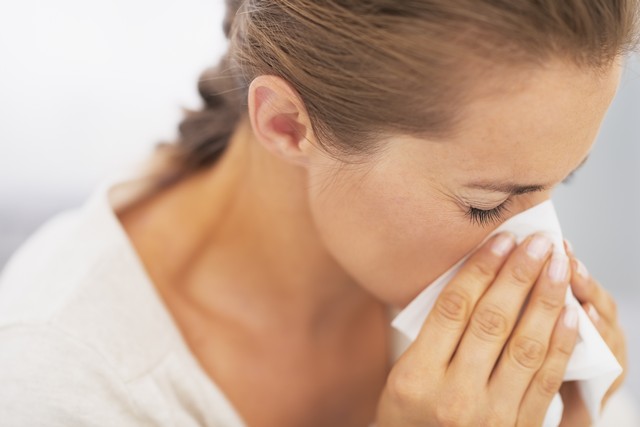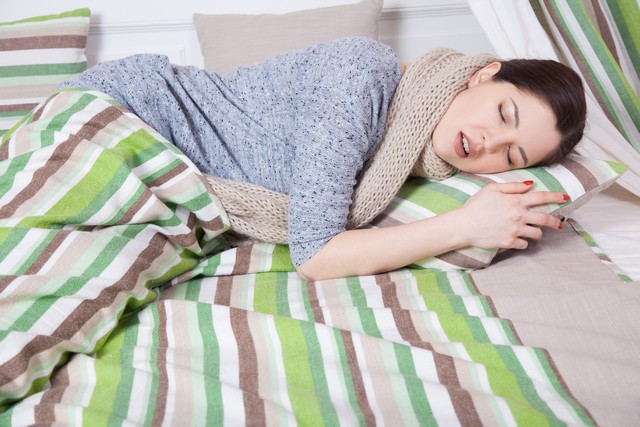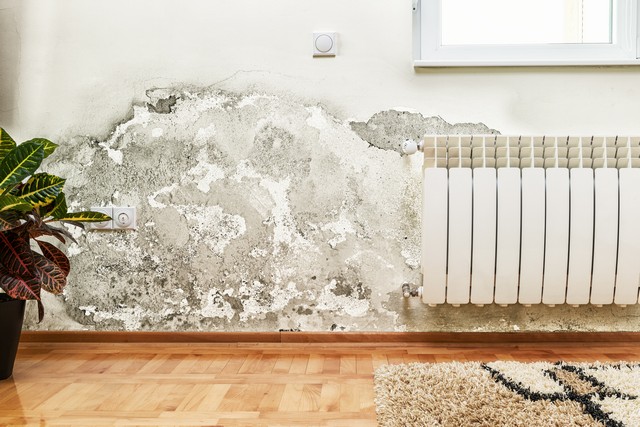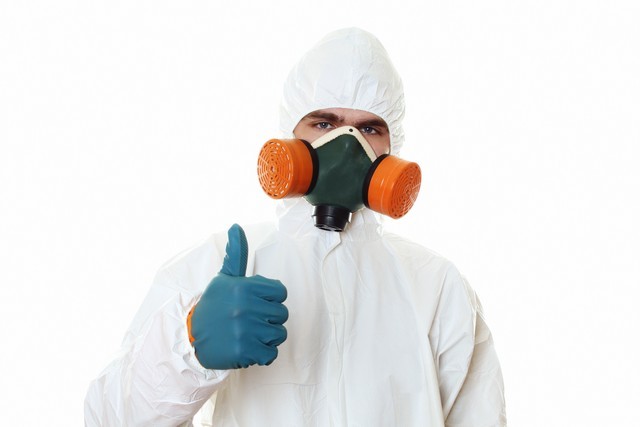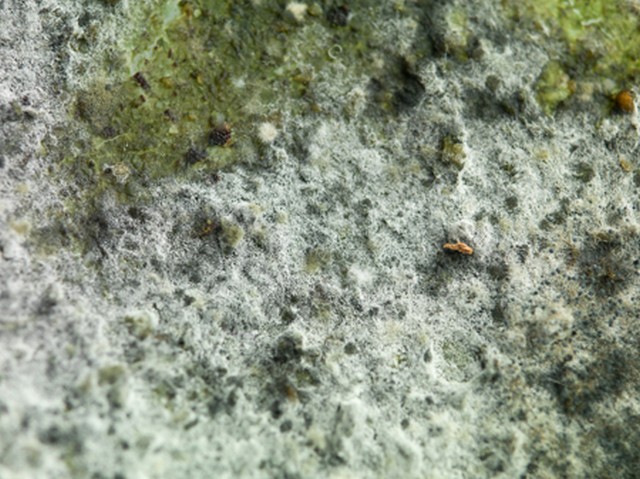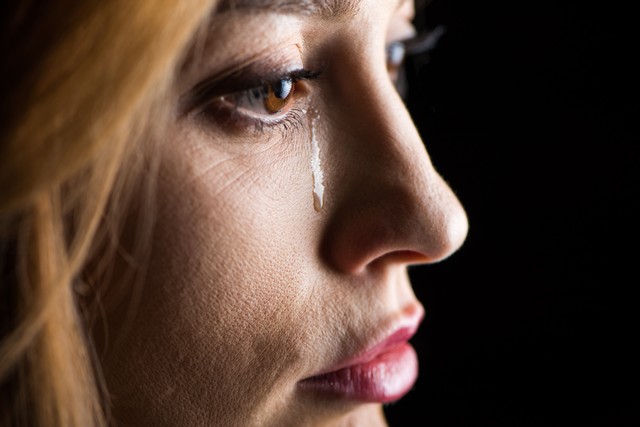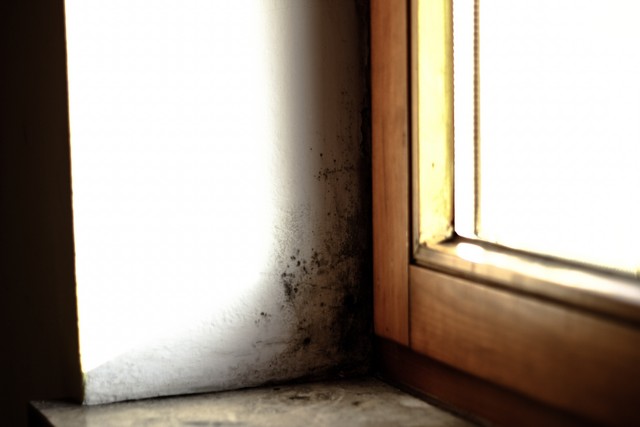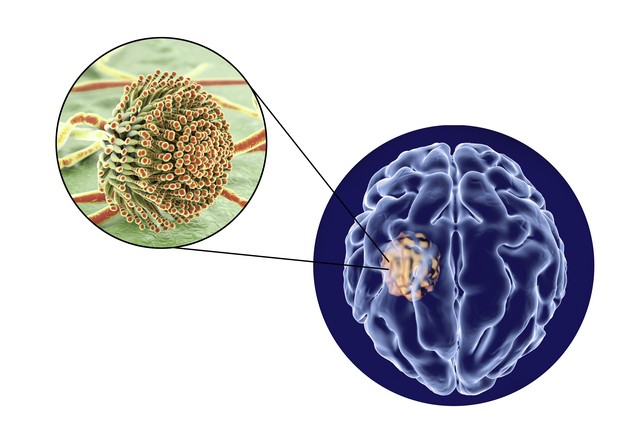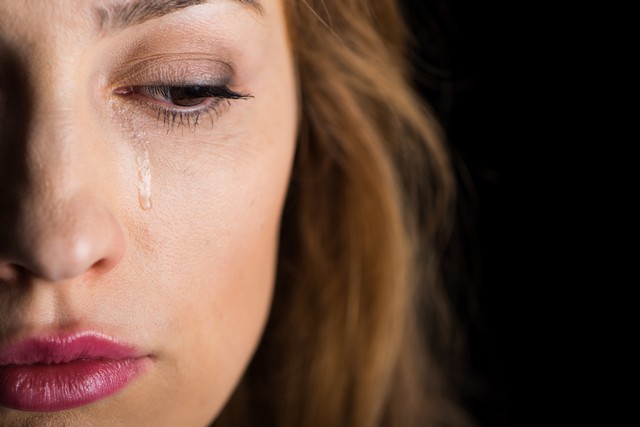
by Eric Brown | Jan 31, 2019 | 37 Symptoms Associated With Mold Illness, Attic Mold, Basement Mold, black mold removal Atlanta, black mold removal Georgia, Can Black Mold Poison You?, Can Mold Kill?, Chronic Inflammatory Response Syndrome (CIRS), Commercial Mold Remediation, Commercial Mold Removal, Crawlspace Mold, Dead Mold Spores, Health, Homeowner Tips, How Toxic Is Mold?, Indoor Air Quality, Killing Mold, Mold Facts, Mold Information, Mold Inspection, Mold Remediation, Mold Removal, Mold Removal Alpharetta GA, Mold Removal Atlanta GA, Questions and Answers, Stachybotrys Black Mold, Toxic Mold
Is Mold Making Me Sick?
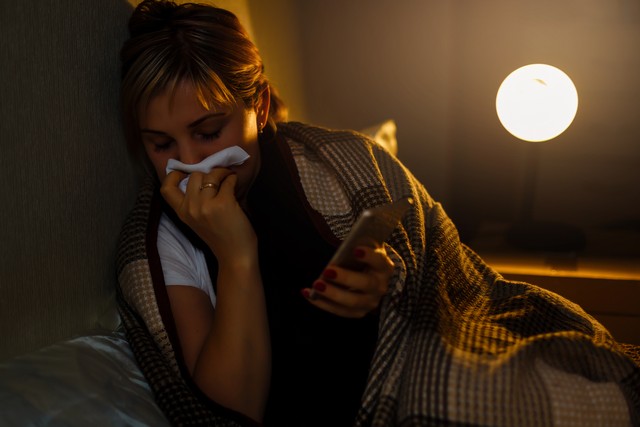
Is Mold Making Me Sick?
Mold B Gone has been serving residents in the Atlanta area for more than a decade. We are experts at mold testing and mold removal, using our proven system to ensure that the indoor ecology of our clients’ properties are healthy.
We are particularly proud to offer specialized mold removal services to individuals that are mold sensitized.
The main purpose of this article is to explain why some people are more susceptible to mold illness and require specialized mold removal services to recover!
What Does Mold Sensitized Mean?
In March of 2015, Wonder Makers Environmental, based in Michigan, launched www.moldsensitized.com with the goal of educating consumers, contractors, and health professionals on the health concerns caused by mold. The website’s goal is to be the ultimate resource of mold information and contains many articles written by the CEO, Michael Pinto.
Since launching the website, many mold sensitized individuals have been interviewed. Five key lessons can be learned from these interviews.
- There is a lack of appreciation in the medical community of the impact mold can have on certain individuals.
- Symptoms from mold sickness are broad, leading to multiple mis-diagnosis of patients by many doctors.
- Mold sensitized individuals seek help from multiple medical practitioners because their illnesses continue.
- The mold sensitized individual eventually learns that mold has been the cause of their sickness.
- Because traditional remediation approaches do not adequately address their sensitivities, mold sensitized individuals often are forced to seek alternative shelters.
According to experts featured on the MOLDY documentary, 28 percent of the population have genes that make them highly susceptible to mold-related illness. Putting this into perspective, and based on the population of the metro Atlanta area, there are approximately 1.5 residents susceptible to mold sickness.
According to Dr. Richie Shoemaker, a physician and expert in the field of biotoxin-related illness and author of the book Surviving Mold, the most common condition associated with mold illness is Chronic Inflammatory Syndrome.
What Is Chronic Inflammatory Syndrome?

What Is Chronic Inflammatory Syndrome?
Chronic Inflammatory Response Syndrome (CIRS), also known as Sick Building Syndrome (SBS), is a combination of illnesses or aliments that are in direct relation with an individual’s place of work or home environment:
An acute and chronic, systemic inflammatory response syndrome acquired following exposure to the interior environment of a water-damaged building with resident toxigenic organisms, including, but not limited to fungi, bacteria, actinomycetes and mycobacteria as well as inflammagens such as endotoxins, beta glucans, hemolysins, proteinases, mannans, c-type lectins and possibly spirocyclic drimanes, plus volatile ogranic compounds.
The term Sick Building Syndrome was first coined by the World Health Organization in the 1980s and it is believed that it is caused by poor air quality caused by water damage.
According to Shoemaker:
This illness happens after exposure to the interior environment of a Water-Damaged Building (WDB). There are many ways buildings become home to a toxic mix of microbes, fragments of microbes, and harmful chemicals. Buildings can host fungi, bacteria, mycobacteria, and actinomycetes as a result of construction defects like inappropriate ventilation; faulty construction of crawl spaces or inadequate building design; flat roofs or fake stucco cladding without adequate caulking; incomplete basements exposed to saturated ground water conditions; or not correcting water leaks.
According to Shoemaker, 25% of the population has a genetic pre-disposition to CIRS; women tend to report more symptoms than men:
Genes made them prime targets for an assault by their own innate immune systems….exposure to the interior environment of a Water-Damaged Building (WDB), [causes] an innate immune response that is going haywire.
Individuals exposed to the toxins in a water damaged building suffer from chronic illness because their bodies are trying to eliminate the foreign substances that stay in the body resulting in chronic inflammation and multiple symptoms. In fact, one of the reasons that it is so difficult to diagnose CIRS is due to the fact that there are 37 symptoms: fatigue; weakness; aches; muscle cramps; unusual pain; ice pick pain; headache; light sensitivity; red eyes; blurred vision; tearing; sinus problems; cough; shortness of breath; abdominal pain; diarrhea; joint pain; morning stiffness; memory issues; focus/concentration issues; word recollection issues; decreased learning of new knowledge; confusion; disorientation; skin sensitivity; mood swings; appetite swings; sweats (especially night sweats); temperature regulation or dysregulation problems; excessive thirst; increased urination; static shocks; numbness; tingling; vertigo; metallic taste; and tremors.
Because of the large number of symptoms and different combinations that a patient can have, CIRS is difficult to diagnose.
Suspect Mold Is Making You Sick? Here Are Some Recommendations!

Suspect Mold Is Making You Sick? Here Are Some Recommendations!
If you have been suffering from ill-health for an extended period of time and the treatments that you are prescribed do not seem to help, then here are some recommended action steps.
- Listen to your body. If you are feeling sick and despite under-going multiple treatments still continue to feel sick, then do not give up on trying to find out what the cause is.
- Research mold sickness. The website, www.moldsensitized.com, has a significant amount of information on mold and it’s impact on health and is constantly updating the site with new information on its blog. In particular, you may want to read these articles: Medical Evidence that Connects Mold Exposure to Illness Keeps Piling Up;
Do People Really Get Sick From a Little Mold in Their House?;
What is Stachybotrys Mold?;
The Mystery of Mycotoxins in Mold Contamination;
The WHO on Mold;
TOP 10 Questions and Answers About Water-Damaged Buildings;
- Review the experiences of mold survivors to gain greater insight into mold sickness. One of the primary reasons you want to do this is so that you will have some further evidence that you can take to your preferred medical practitioner.
- Continue to educate yourself. Because of the lack of knowledge in the mainstream medical community, you need to take a lead role in determining whether mold is making you sick.
- Finally, if after all your research, you think that mold is the problem, then verify the existence of mold in your home by investing in a mold inspection and air quality test.
What Should I Do If I Am Diagnosed With Mold Sickness?

What Should I Do If I Am Diagnosed With Mold Sickness?
If you suspect that you are sick because of mold, then the next step is to find a Doctor that has knowledge about mold sickness. To find listings of environmental doctors throughout the world, click here.
Two Steps To Recovery!
Once you are diagnosed, there are two distinct steps to your recovery.
Seek Medical Treatment
Medical treatment is designed to detox your body and allow your immune system to recover and begin to regain its strength. The detox strategy will be prescribed by your physician who will likely recommend that you remove yourself from the property that has been making you sick until it is safe to occupy again.
Remediate Your Home
The process of removing mold from your home and ensuring that you can move back in without experiencing further sickness is the long term solution to health recovery.
In the past, mold sensitized individuals were forced to abandon their primary residences even after remediation because contractors did not understand the Big Picture of how the remediation and cleaning activities have to be coordinated with the medical and building maintenance aspects of the project.
If you want to invest into mold remediation, we recommend that you hire Mold B Gone because we have invested in the remediation for sensitized individuals training. Our team graduated from this course. In addition, Mold B Gone specializes in whole house and room sanitizing to reduce the amount of bacteria and pathogens in your home allowing you to breath easier and healthier.
Five Key Benefits Offered To Mold Sensitized Individuals By Mold B Gone!
Mold B Gone offers mold sensitized individuals these five key benefits:
- Commitment to completing the job correctly the first time, with the understanding that our goal is provide you with a safe place to live or work because our team knows that our work practices can impact your health.
- Clear understanding that the environmental portion of projects with sensitized individuals has many facets (i.e., source removal, content cleaning, HVAC decontamination, whole structure cleaning, building performance improvements, etc.) and will provide services only in those areas where they are qualified.
- Clear understanding that your project requires procedures that are more protective than the current standard of care for the mold remediation industry.
- Commitment to specific project endpoints that have been designed for sensitized individuals (endpoints that incorporate the latest health/science data).
- Long term cost savings, peace of mind, and less anxiety because we will be familiar with situations like yours and the most effective techniques for this stringent remediation.
Got Mold Questions?
Mold B Gone is here to help and committed to serving mold sensitized individuals. If you suspect that mold is making you sick, call us, 470-545-4467 or contact us via e-mail for further assistance. Our goal is to help you live a healthier and happy life. Most importantly, we truly empathize with your situation and are committed to helping you and guarantee our services.

by Eric Brown | Jan 3, 2019 | Attic Mold, Basement Mold, black mold removal Atlanta, black mold removal Georgia, Bleach and Mold, Commercial Mold Remediation, Commercial Mold Removal, Crawlspace Mold, Dead Mold Spores, Health, Homeowner Tips, Mold Facts, Mold Information, Mold Inspection, Mold Remediation, Mold Removal, Mold Removal Alpharetta GA, Mold Removal Atlanta GA, Mold Removal Cost, Questions and Answers
Got Mold? Call Mold B Gone, 470-545-4467!

Got Mold? Call Mold B Gone, 470-545-4467!
One of the challenges facing consumers that have mold is determining how to get it removed properly. Often Mold B Gone is called by consumers who hired a mold removal company that did not do the job properly the first time and actually made the problem worse. Be aware of any mold removal company that is unwilling to provide references, evidence of training, a detailed scope of work, recommends spraying bleach, and does not build containment to prevent cross contamination.
As a consumer, you need to understand that mold removal is a profession. Experienced mold removal contractors, like Mold B Gone, have training and understand that the first step to preventing mold is to first identify the cause of the mold growth, which is inevitably caused by excess moisture. The first step is to fix the moisture issue, then tackle the mold problem. There are 8 specific steps that mold removal professionals follow to ensure that the indoor air quality of your home or business becomes healthy. Mold removal is often called mold remediation because well trained contractors understand and implement the 8 steps necessary to restore the indoor air to healthy levels.
The purpose of this article is to outline why you need to hire a professional when you do find mold that needs to be removed.
Only Hire Professional Contractors To Remove Mold!

Only Hire Professional Contractors To Remove Mold!
One of the biggest concerns that most home owners have pertains to the cost of mold removal.
Because of the expense that mold removal poses, the human tendency is to try to find the best deal. However, be wary of contractors or friends that offer to remove your mold, particularly if they have no training or experience.
Do not fall for the sales pitch or claims that mold can be remediated with ozone or other types of machines that kill mold.
Another potential claim made by some removal companies is that they can just fog your home or spray a bunch of chemicals and the mold will magically disappear.
Contractors that offer these types of solutions are not professionals because they are just trying to kill the mold, which as we explained in a previous article, is not a proper method for long term mold removal.
Get Educated About Mold!
One of the reasons we post articles about mold is to educate our readers; an informed consumer is able to make better choices.
Mold Needs Moisture!
Before addressing any mold problem, the most important concern is to first find the moisture problem that is causing the mold to grow in the first place.
Mold needs three ingredients.
First, a food source. Most homes present an ample food source for mold because they are made of dead material that mold loves to eat: high cellulose materials such as paper and wood, drywall, wallpaper, carpet, ceiling tiles, dust, and dirt.
Second, the right climate: mold flourishes when the temperature ranges from 41 degrees fahrenheit up to 100 degrees fahrenheit.
Third, and most importantly, a moisture source. Without moisture, mold can not thrive and grow. If you smell or see mold, then you have a problem because there is a moisture source in your home. Moisture is usually caused by leaks in pipes and/or the roof, sewer backups, flooding, condensation, etc.
Mold Removal Is Not Easy!
Any contractor that says there is an easy fix for mold removal, does not understand the biology of mold and does not realize that mold is designed to consume dead organic material and is an active part of our eco-system.
Unfortunately, the good that mold does by recycling dead material in our environment can cause significant harm when it grows indoors. First, mold can make you sick, causing asthma, sinusitis, and other health conditions. Second, as the mold eats away at your property, it will cause the wood to rot and eventually lead to structural integrity issues, ultimately reducing the value of the home.
When you encounter mold in your home, do not hire contractors that just want to tear out the contaminated materials and spray chemicals, particularly if their whole procedure involves killing the mold. It is not just about killing mold because dead mold spores can be just as harmful as live ones.
Mold is everywhere because it is a living fungi. The survival mechanism of mold is to disperse spores and find more areas to grow on and populate itself. When you have mold inside of your home, understand that the number one concern of mold remediation professionals is to prevent the mold from spreading, ie. to contain it and prevent cross-contamination. Then, once the containment is set up, the process of addressing the mold problem can begin.
Get YES Answers To These 10 Questions Before Hiring A Contractor!

Get YES Answers To These 10 Questions Before Hiring A Contractor!
Before you hire any contractor to remediate the mold in your property, be sure to consider the following questions:
- Is the contractor prepared to give you a written contract/change order?
- Is the contractor prepared to provide you with a remediation plan?
- Is the contractor prepared to provide you with a post-remediation report?
- Is the contractor prepared to recommend independent indoor environmental professionals that can provide you with a post-remediation verification report? This is very important because this report determines whether or not the remediation has been successful.
- Does the contractor carry insurance?
- Are the contractor’s employees trained and certified?
- Does the contractor set up containment to prevent cross contamination?
- Does the contractor use negative air machines and air scrubbers to clean the air?
- Is the contractor willing to provide you with referrals and their contact details?
- Does the contractor use DOP (Dispersed Oil Particulate) tested equipment which is a process that tests the integrity of the HEPA (High Efficiency Particulate Air) filters used?
If you get NO answers to any of the above questions, then re-consider hiring this contractor.
Mold Remediation Professionals Are Building Doctors!
When you are sick, you go to a Doctor because you want the best treatment possible to get healthy.
Similarly, if you have mold, hire a mold remediation professional because they are Building Doctors, whose objective is to cure the property of toxic mold so you can live a better, healthier life.
Like health care professionals, mold remediation specialists take specialized courses and training to ensure that they can properly eliminate the mold problems of their customers.
To ensure a long term fix hire a mold remediation professional that uses the following 8 Step Mold Remediation Process.
8 Step Mold Remediation Process!

8 Step Mold Remediation Process!
Step 1: Assess The Cause of The Contamination
During the mold inspection, the professional consultant will identify the source of the water infiltration that is causing the mold contamination.
During this step, the consultant will also identify the extent of the mold growth to ensure that all areas of growth can be addressed.
The next step is to create a work plan, also known as a scope of work.
It is important that if the mold inspector you hire to do the initial investigation also does the remediation work, then a Third Party should be hired to do post-remediation verification, which is step 8 in the process.
Step 2: Identify the Species of the Mold
During the mold inspection, samples of the mold will be taken using swab or tape samples. Air quality tests may also be done. The samples are then sent to an accredited laboratory which will provide a report outlining what species of mold are present.
This report is important for three key reasons:
- This report is important because it helps the mold remediation professional determine the hazard level. Some mold species, like stachybotrys, pose greater hazards and may require additional safety procedures to protect the occupants of the property.
- Identifying the species also helps determine the most cost effective method to resolve the mold problem.
- Identifying the species can also help health care professionals determine if health concerns may be related to the mold contamination.
Step 3: Scope of Work
Once the investigation is complete, the remediation plan / scope of work can be completed.
This step is important because it addresses what caused the mold and all of the safety protocols required for the remediation to be successful.
Step 4: Containment, Decontamination Chambers & Negative Air
The area is contained and negative air pressures are set and regularly monitored to prevent cross contamination of mold spores and mycotoxins to other areas of the home.
During the mold removal and remediation process mold spores become disrupted meaning spore counts can increase 10 to 100 times.
Proper procedures, containment and HEPA filtration equipment are required to prevent cross contamination.
Without these controls, the situation can become much worse than the original issue.
Step 5: Removal of the Mold
Once the containment and decontamination chamber is set up, and required negative air pressure levels are achieved the mold is removed.
Mold damaged materials such as drywall, carpet, underlay, and other porous materials are removed and disposed.
Non-porous and some semi-porous materials can be cleaned and decontaminated.
Damaged or moldy materials that are removed are then bagged or sealed with plastic sheathing before removal from the containment to prevent cross contamination.
Step 6: Odor Removal
Mold contamination can create offensive odors such as a musty basement smell.
Carbon filters are utilized to assist in the elimination of odors from the area during the remediation process.
Specialized treatments and air cleaners may be required to ensure odors do not return in the future.
Step 7: Cleaning, HEPA Vacuuming & Air Scrubbing
Once the mold contaminated materials are removed, the area must be thoroughly cleaned using antimicrobial treatments on hard surfaces and HEPA vacuuming on the porous surfaces to remove the residual mold spores.
The air must also be scrubbed and purified to remove mold spores and mycotoxins using approved DOP tested HEPA air scrubbing equipment.
Step 8: Post Remediation Verification
Post remediation verification must be conducted by an approved third party to ensure that the environment has been brought back to a normal fungal ecology suitable for occupancy.
The final clearance investigation must include a visual inspection using specialized instrumentation and a full range of air quality and surface sampling.
Got Mold Questions?

Got Mold Questions?

by Eric Brown | Dec 19, 2018 | Uncategorized
Merry Christmas!

Merry Christmas!
Christmas is a time to spend with family and friends. Mold B Gone is grateful to our staff, vendors, and customers. We wish them all the best during the holiday season!
Christmas is the perfect time to celebrate the love of God and family and to create memories that will last forever. Jesus is God’s perfect, indescribable gift. The amazing thing is that not only are we able to receive this gift, but we are able to share it with others on Christmas and every other day of the year. (Joel Osteen)
Christmas waves a magic wand over this world, and behold, everything is softer and more beautiful.(Norman Vincent Peale)
Christmas is the spirit of giving without a thought of getting. It is happiness because we see joy in people. It is forgetting self and finding time for others. It is discarding the meaningless and stressing the true values. (Thomas S. Monson)
He who has not Christmas in his heart will never find it under a tree. (Roy L. Smith)
by Eric Brown | Dec 6, 2018 | Attic Mold, Basement Mold, black mold removal Atlanta, black mold removal Georgia, Crawlspace Mold, Health, Homeowner Tips, Indoor Air Quality, Killing Mold, Mold Facts, Mold Information, Mold Inspection, Mold Remediation, Mold Removal, Mold Removal Alpharetta GA, Mold Removal Atlanta GA
Top 7 Places Mold Hides In Your Home!

Top 7 Places Mold Hides In Your Home!
Mold needs three key ingredients to grow:
- A food source which includes high cellulose content materials such as paper and wood. Other sources of food include drywall, wallpaper, carpet, ceiling tiles, dust, and dirt.
- The ideal temperature of 5 degrees to 38 degrees which provides ideal growing conditions for mold.
- Most importantly, water and moisture is the essential ingredient required by mold to grow which can be provided by leaking pipes, roofs and ceiling, sewer backups, floods, and condensation
The core problem with mold is that it will keep growing until it is removed. This is a concern because, on average, we spend 90% of our time indoors which can cause health issues for many plus structural issues for the property if the mold is not contained and removed.
The purpose of this article is to provide you with information to help you determine if you have a mold problem and explain what you should and should not do if you do find mold.
Where Should I Look For Mold?

Where Should I Look For Mold?
One of the first signs that you have a mold problem will be a “musty” or “mildewy” odor. The next step is to determine where the smell is coming from. The seven areas listed below are some of the most common areas in a home where you will find mold. Other visual clues to look for during your investigation of these areas include: buckled floorboards, discolored carpet, new water stains on the ceiling or wall, and/or actual visual growth such as black specs.
Mold Area 1: Bathrooms and Kitchens
The most common area where you will find mold is under the sinks because of leaks.
Mold Area 2: Appliances
Another potential source of leaks are your refrigerator, dishwasher, and washing machines. Check behind and under the appliances for mold.
Mold Area 3: Roof
If you notice water stains on the ceilings, then your roof could be leaking which will cause mold if the leak is not repaired.
Mold Area 4: Windows
If you have condensation in the home, you will likely find mold on the window sills and around the windows.
Mold Area 5: Basement
If there is high humidity in your home, then check your basement and other areas of the home for mold.
Mold Area 6: Closets
Leaky pipes, high humidity, and other sources of moisture can result in hidden mold in your closets. If there are boxes in the closet, move them and check the walls and floor for mold.
Mold Area 7: Crawl Spaces
Moisture in your crawl space will cause mold to grow.
I Got Mold! What Should I Do?

I Got Mold! What Should I Do?
Two key facts to take into consideration if you think you have mold.
Mold Fact 1: Mold Spreads By Releasing Spores
If you find mold, DO NOT disturb the material. Even if you have an isolated area of mold growth, disturbing the area could potentially worsen the mold problem because the spores will become airborne and seek out other areas in the home to grow. In short, your primary objective is to contain the area where mold is growing and prevent it from spreading.
Mold Fact 2: Some Molds Are Toxic
Another key concern is determining what type of mold is growing. Some molds, like Aspergillus and Stachybotrys, are toxic and can cause many health issues. Molds also produce myctoxins which studies have shown can depress the immune system, leading to many illnesses.
What You Should Not Do If You Got Mold!
We do not recommend removing mold without first consulting a trained professional. If you think you have mold, here are 5 things you SHOULD NOT DO if you have a mold problem:
1. DO NOT Clean Mold With a Normal Vacuum!
Mold spores are extremely small and pass through a normal vacuum filter. Vacuuming, will simply spread the spores! Mold remediation professionals use HEPA vacuums because the filters trap the mold spores preventing cross contamination.
2. DO NOT Remove Mold Contaminated Materials Without Proper Containment!
Mold remediation professionals set up containment barriers to prevent mold from spreading.
3. DO NOT Clean Mold With Bleach!
Bleach is great for cleaning bacteria and viruses, but does not work on mold and may in fact make the situation worse because the simple act of applying bleach creates moisture which mold needs to thrive and grow.
4. DO NOT Remove Mold Contaminated Materials Without Wearing Personal Protective Equipment!
Some molds can be toxic. This is the reason that mold remediation professionals wear safety equipment to prevent mold spores from entering the lungs and touching the skin.
5. DO NOT Ignore or Neglect Your Mold Issue!
In addition to the health issues that mold growth may cause, keep in mind that mold is like a parasite that will keep feeding. The key to stopping mold growth is to address and fix the causes of moisture and then remove the mold so that it will not continue to spread and feed on the home, thereby impacting the structural integrity and long term value of the property.
What You Should Do If You Got Mold!
If you discover mold in your home or business, just remember that some molds can be toxic and that it is best not to disturb the mold which could inadvertently release spores in the air and create even more problems.
Got Mold Questions?

Got Mold Questions?

by Eric Brown | Oct 26, 2018 | 37 Symptoms Associated With Mold Illness, Chronic Inflammatory Response Syndrome (CIRS), Health, Indoor Air Quality, Mold and Depression, Mold Facts, Mold Information
Does Mold Cause Depression?

Does Mold Cause Depression?
Recently, the news reported about an eight year old boy, William Hewlett, that begged his parents to kill him after he started suffering from a brain disorder they fear may have been triggered by mold. According to the article, this young boy developed Pediatric Acute-onset Neuropsychiatric Syndrome (PANS) which is caused when an infection triggers a misdirected immune response resulting in brain inflammation. One of the suspected causes is environmental factors, like mold. William’s mother, Johanne Hewlett, suspects that mold may be the cause because tests showed that her son had high levels of mycotoxins in his system.
One of the symptoms that William displayed was a complete lack of willingness to live, he was extremely depressed. According to Dr. Mary Ackerley’s article, The Brain on Fire: The role of toxic mold in triggering psychiatric symptoms, people feel depressed when exposed to mold because toxins released by mold, mycotoxins, pass directly into the brain
This is the reason that many people exposed to mold suffer from symptoms of depression:
- Difficulty concentrating, remembering details, and making decisions;
- Fatigue and decreased energy;
- Feelings of guilt, worthlessness, and/or helplessness;
- Feelings of hopelessness and/or pessimism;
- Insomnia, early morning wakefulness, or excessive sleeping;
- Irritability, restlessness;
- Loss of interest in activities or hobbies once pleasurable, including sex;
- Loss of pleasure in life;
- Overeating or appetite loss;
- Persistent aches or pains, headaches, cramps, or digestive problems that do not ease even with treatment;
- Persistent sad, anxious, or “empty” feelings;
- Thoughts of suicide or suicide attempts
The purpose of this article is to provide you with a basic understanding of scientific and anecdotal data linking mold with depression.
Similar Symptoms For CIRS and Depression!

Similar Symptoms For CIRS and Depression!
In 2015, Wonder Makers Environmental, created a website, www.moldsensitized.com, dedicated to creating a resource on mold. On their website, they have documented some interviews with mold survivors who suffered from Chronic Inflammatory Response Syndrome (CIRS).
One of the key conclusions that can be gained from these interviews: mold does have an impact on the brain. In the words of the survivors:
“My ears were ringing and it felt as if my head was about to explode.” (Sandy Wolfe: Mold Survivor)
“I had anxiety, brain fog, memory and cognition problems, difficult concentrating and speaking.” (Beth Jarret: Mold Survivor)
“I developed chronic headaches and migraines, fatigue, muscle weakness, dizziness, memory issues, and mood swings.” (Mary DeBoer: Mold Survivor)
“I had blurry vision, insomnia, rage, anxiety, panic attacks, ringing ears, twitching muscles, hallucinations, dizzinesss, and nightmares.” (Amy Nix: Mold Survivor)
“The first symptom that alerted me that something was wrong was the sensation of crawling on my skin along with ice pick/pinprick pain in random places. Shortly after, I noticed that I had the inability to recollect words, slurry speech, memory loss, and an overwhelming fatigue. Other symptoms included vision disturbances, irritability and severe depression.” (Hilesca Hidalgo: Mold Survivor)
“I had burning eyes, headaches, pain in my arms and legs, balance issues, impaired cognitive abilities, and vision issues.” (Kelli Hamilton: Mold Survivor)
All of these survivors suffered from a condition known as Chronic Inflammatory Response Syndrome (CIRS). Listed below are the 37 symptoms associated with CIRS.
- Fatigue
- Weakness
- Aches
- Muscle Cramps
- Unusual Pain
- Ice Pick Pain
- Headache
- Light Sensitivity
- Red Eyes
- Blurred Vision
- Tearing
- Sinus Problems
- Cough
- Shortness of Breath
- Abdominal Pain
- Diarrhea
- Joint Pain
- Morning Stiffness
- Memory Issues
- Focus/Concentration Issues
- Word Recollection Issues
- Decreased Learning of New Knowledge
- Confusion
- Disorientation
- Skin Sensitivity
- Mood Swings
- Appetite Swings
- Sweats (especially night sweats)
- Temperature Regulation or Dysregulation Problems
- Excessive Thirst
- Increased Urination
- Static Shocks
- Numbness
- Tingling
- Vertigo
- Metallic Taste
- Tremors
Comparing the list of CIRS symptoms with the symptoms of depression listed earlier, it is clear that there are many similar symptoms associated with both conditions. This is likely the reason why many people sick from mold are unable to get proper treatment because they are diagnosed with a depressive disorder as opposed to a health condition caused by exposure to mold.
The biggest challenge mold survivors face is the lack of empathy and knowledge from doctors who do not understand mold sickness. Tragically, some survivors are even told that their sickness is all in their head:
“The doctors told us there was nothing wrong with her as she lay screaming in pain, convulsing on the table. The next ER, at a different hospital told us the same thing. The specialist we were sent to said ‘There is nothing wrong with her, I’ve read the reports. I won’t see her until she has a neuro-psych work-up.” (Debra Rogers: Mold Survivor)
Brown University Study on Mold and Depression!

Brown University Study on Mold and Depression!
In 2007, researchers at Brown University released a study showing a link between mold and depression.
The study, led by epidemiologist Edmond Shenassa, analyzed data from 5,882 adults in 2,982 households.
The data was collected by the World Health Organization in 2002 and 2003. Interviewers visited 1000s of homes in eight European cities and asked residents a series of questions to assess symptoms of depression, including symptoms of low appetite, self-esteem, and sleep disturbances. They also tried to visually verify the presence of mold by looking at spots on the wall and ceilings.
What they found was that symptoms of depression were up to 40% higher for residents living in visibly moldy households than for residents that did not have mold in their homes.
Based on this survey, they concluded that there is a definite connection between damp, moldy homes and depression.
The studies author, further concluded that:
“Physical health, and perceptions of control, are linked with an elevated risk for depression, and that makes sense. If you are sick from mold, and feel you can’t get rid of it, it may affect your mental health. Healthy homes promote healthy lives.”
Despite the findings of this study, many in the scientific community consider this an anecdotal study because the researchers did not take actual air samples or swab samples of the suspected visual mold. Because of this, the conclusions of this study have been questioned.
Scientific Data Linking Mold With Depression!

Scientific Data Linking Mold With Depression!
In her article, The Brain on Fire: The role of toxic mold in triggering psychiatric symptoms, Dr. Mary Ackerley explores the scientific research linking mold with brain disorders, including depression.
Unfortunately, one of the common symptoms of depression is suicide. As stated by Ackerley:
“I have patients who will walk into moldy places and their first sign that something is wrong is that they start thinking about suicide. I see that fairly frequently.”
According to Ackerley and other experts she cites, people feel depressed when exposed to mold because toxins released by mold, mycotoxins, pass directly into the brain.
Mold enters the body through the nose and eyes via the olfactory neurons which directly communicate with the brain.
Once the toxins enter the brain, it causes neuroinflammation which has a negative impact on the frontal cortex of the brain, the pleasure center that rules emotion, leading to depression.
Since Ackerley and other scientists believe that mold can cause depression, they have developed treatment protocols that focus on detoxing the patient.
The first step before treatment is to verify if mold is in fact the cause of sickness, which is accomplished through blood tests and the visual contrast sensitivity test developed by Dr. Shoemaker.
The second step is to begin the detox process. Ackerley has successfully used the drug cholestyramine (CSM), to reduce symptoms by up to 75%, provided the patient removes themself from the toxic environment.
She also recommends her patients to adopt a low carb and low sugar diet and the addition of supplements such as fish oil, magnesium, turmeric, probiotics, and vitamin D.
Mold Does Affect Your Brain Causing Depression!

Mold Does Affect Your Brain Causing Depression!
According to Ackerley, the prevalence of mold induced depression could be quite high:
“One fascinating thing I’d like to point out: Dr. Shoemaker has often said that it’s about 25% of the population is susceptible to biotoxin-associated illness. When you add up who’s been diagnosed with a psychiatric illness, it too adds up to about 25% of the population. Is that a coincidence? Perhaps. But it’s a very interesting coincidence to me.”
With respect to the evidence linking the relationship between mold and depression, it is quite clear that mold does affect the brain and this is confirmed by scientific data, further strengthened by the anecdotal data offered by the Brown University study and the mold survivors who have come forward and documented their symptoms.
How prevalent is mold sickness? According to Dr. Scott McMahon, MD, who appeared in the MOLDY documentary:
“Possibly every doctor…is treating mold illness, and they just don’t realize it.”
If you suffer from depression, here are two questions that you need to ask:
- How healthy is the air quality of my home?
- Does my home have mold?
Got Mold Questions?

Got Mold Questions?
If you suspect that your depression is caused by poor indoor air quality and mold, contact Mold B Gone so that we can do a formal mold inspection and indoor air quality tests. Peace of mind is just a phone call away, 470-545-4467!
